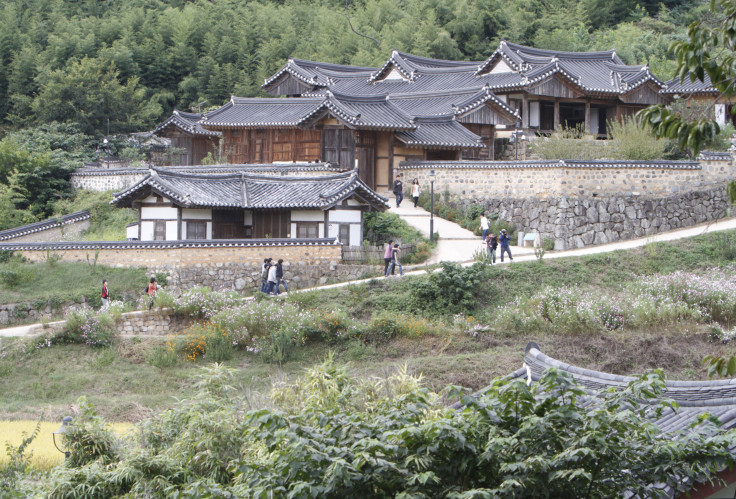Bones Of Two Human Sacrifices Found In Ancient South Korea Kingdom’s Palace

Archaeologists have found the skeletons of two human sacrifices made in a “Moon Castle” centuries ago, the first to be found at a Korean site.
Agence France-Presse reported the pair was killed in the fifth century “to ensure the success of ancient construction projects.” Their bones were discovered in South Korea at the foundation of the ancient palace Wolseong, which translates to Moon Castle, in what was once the capital of the Silla kingdom. That kingdom ruled the area for hundreds of years, and was known for unifying with the two others reigning in Korea.
Read: Scientists Use Bones to Recreate Ancient Woman’s Face
Scientists are still working to find out how the two sacrificed people died, but they were buried while they were unconscious or already dead because there are no signs of a struggle. People who were buried with dead kings, on the other hand, to serve them in the afterlife were buried alive.
They are also analyzing DNA and the bones themselves to find out more about the two people’s lives before they were killed.
“This is the first archaeological evidence that folklore about humans being sacrificed for the foundations of buildings, dams or walls were true stories,” Gyeongju National Research Institute of Cultural Heritage spokeswoman Choi Moon-Jung told AFP.
The news service described the victims as being found with “one facing upward, the other turning its face and arms slightly towards the first.”
“Folklore indicates humans were sacrificed to appease gods and plead with them to ensure the structures being built lasted a long time,” senior researcher Park Yoon-Jung told AFP.
Read: There Are 17 New Mummies in Egypt
The ancient Koreans are not the only culture that has practiced human sacrifice. The Aztecs are particularly well-known for killing thousands of people every year in ancient Mexico to be sacrificed to the sun. There have been others, but Encyclopaedia Britannica notes “accusations of human sacrifice in ancient and modern times have been far more widespread than the ritual practice ever was.” The practice of burying servants and slaves — dead or alive — with the deceased was more common, however, with connections to ancient societies throughout Africa, the Middle East and Asia. Not all of these incidents were in ancient times though as some Chinese emperors were buried with their servants until the 1600s.
The Wolseong palace ruins are part of the Gyeongju Historic Areas that are a UNESCO World Heritage Site.
“The Korean peninsula was ruled for almost 1,000 years [57 B.C.–935 AD] by the Silla dynasty, and the sites and monuments in and around Gyeongju bear outstanding testimony to its cultural achievements,” UNESCO said. “These monuments are of exceptional significance in the development of Buddhist and secular architecture in Korea.”
Also part of those historic areas are a number of tombs, temples and other structures.
© Copyright IBTimes 2024. All rights reserved.




















